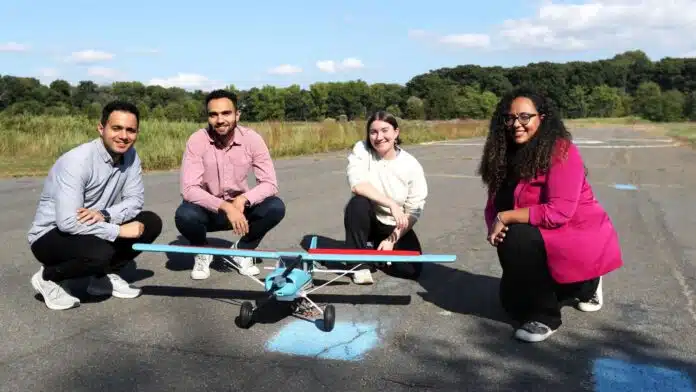
By Jay Kakade 4 Nov, 2024
Collected at: https://www.techexplorist.com/bird-inspired-rows-flaps-improve-flight-performance/91894/
Inspired by bird feathers called covert feathers, researchers at the University of Princeton have found that rows of flaps can enhance flight during maneuvers such as landing or turbulence. Researchers installed covert-inspired flaps to a remote-controlled aircraft’s wings to show the prevention of stalling.
Stalling is a condition that causes a plane to lose lift and jeopardize its ability to stay aloft. It may occur during a slow drive or after encountering turbulence. This biomimicry-based design could make it easier to gain control during stalling.
“These flaps can both help the plane avoid a stall and make it easier to regain control when a stall does occur,” said the co-author Aimy Wissa.
While recent studies have observed the covert feathers, no study has quantified the aerodynamic role during bird flight. Researchers mounted the remote-controlled aircraft into a wind tunnel to estimate the aerodynamic function.
The tunnel was equipped with a metal contraption that stimulated and measured the air interaction with the wings and the flaps. The high-speed camera, sensors, and lasers were used to precisely read the forces felt by the wing.
“The wind tunnel experiments give us really precise measurements for how air interacts with the wing and the flaps, and we can see what’s actually happening in terms of physics,” Sedky said.
Birds have multiple rows of covert feathers. To accurately note the improvement in flight, researchers started the flight with a single row of covert feathers.
After analyzing the data, researchers uncovered two flow control mechanisms associated with a single covert flap. One of these, “shear layer interaction,” was previously unidentified.
Subsequent test flights with multiple rows of flaps improved lift by 45% and reduced drag by 30%. The team found that the five-row configuration enhanced overall wing stability.
“The discovery of this new mechanism unlocked a secret behind why birds have these feathers near the front of the wings and how we can use these flaps for aircraft. Especially because we found that the more flaps you add to the front of the wing, the higher the performance benefit.” Wissa said.

After these tunnel experiments, Princeton researchers demonstrated the technology in real-world conditions. They teamed with aerospace engineers and equipped a radio-controlled airplane with covert-inspired flaps.
The engineers programmed the flight to stall the aircraft autonomously and repeatedly. When deploying a stall, the aerospace engineers were amazed that the flaps helped delay and reduce stall intensity.
Aimy Wissa said, “That’s the power of bioinspired design. The ability to transfer things from biology to engineering to improve our mechanical systems, but also use our engineering tools to answer questions about biology.”
Moreover, the researchers asserted that their findings could be extended to other applications. They affirmed that the theory could apply to cars, underwater vehicles, and even wind turbines.
Journal Reference
- Sedky, G., Simon, N., Othman, A. K., Wiswell, H., & Wissa, A. (2024). Distributed feather-inspired flow control mitigates stall and expands flight envelope. Proceedings of the National Academy of Sciences, 121(45), e2409268121. DOI: 10.1073/pnas.2409268121

Leave a Reply